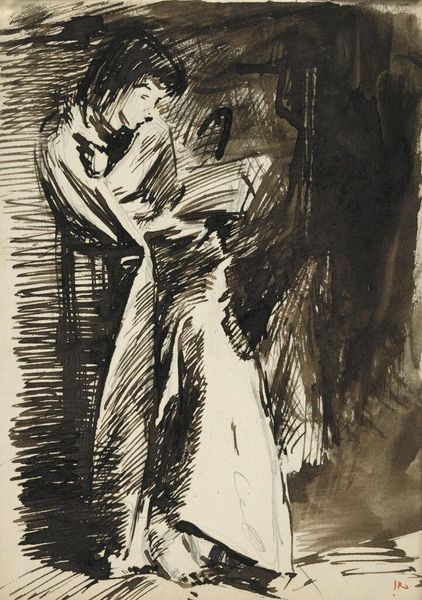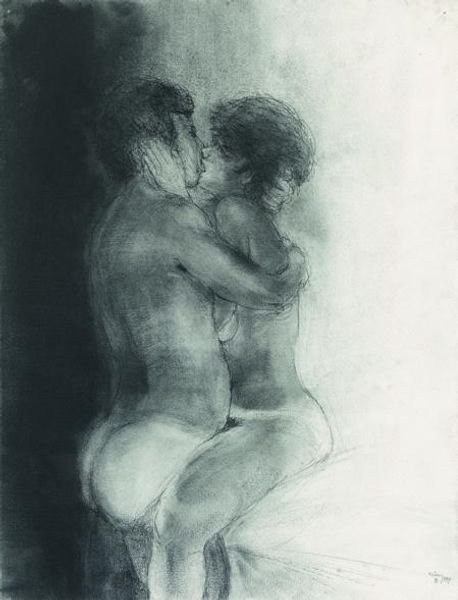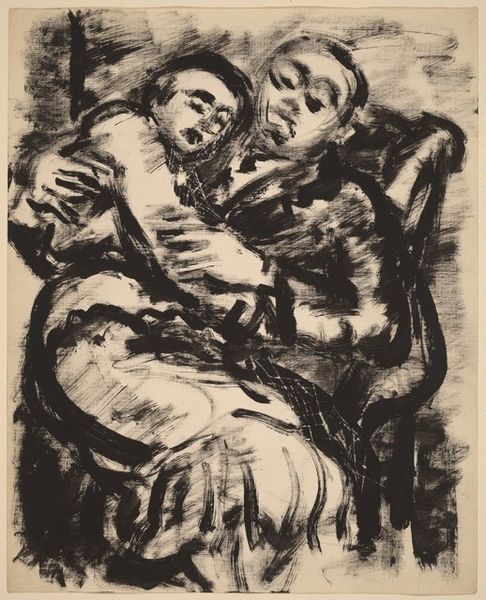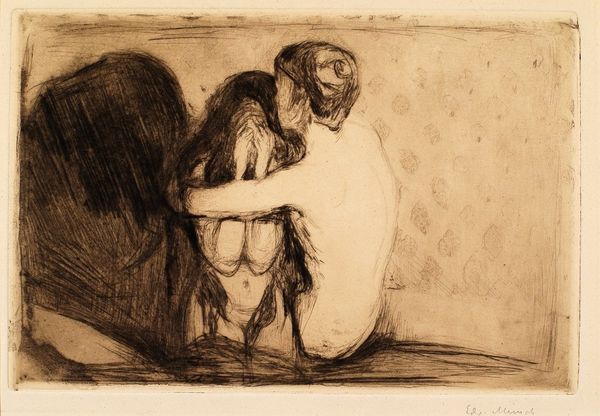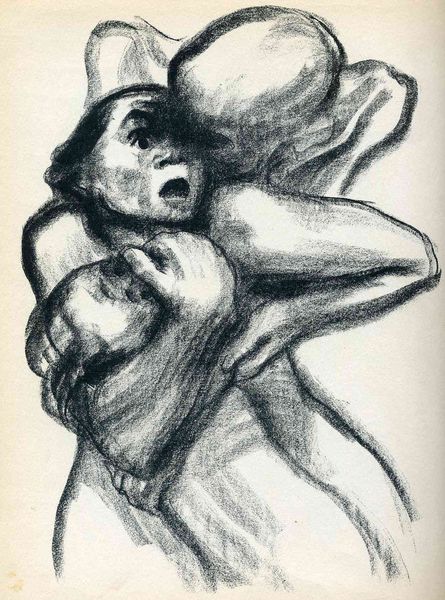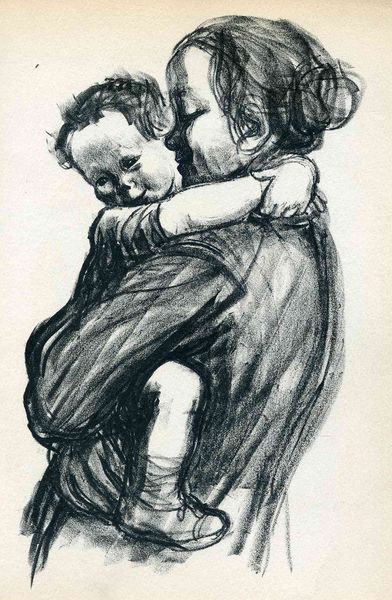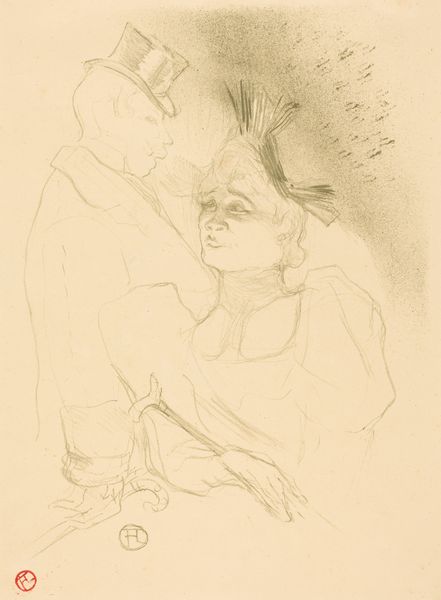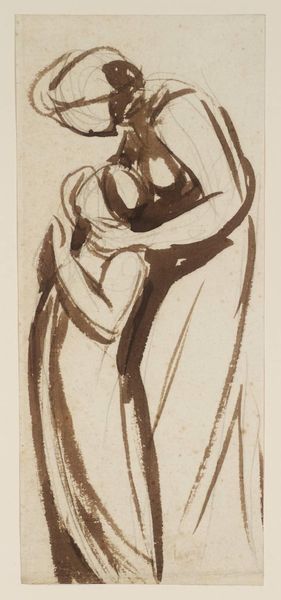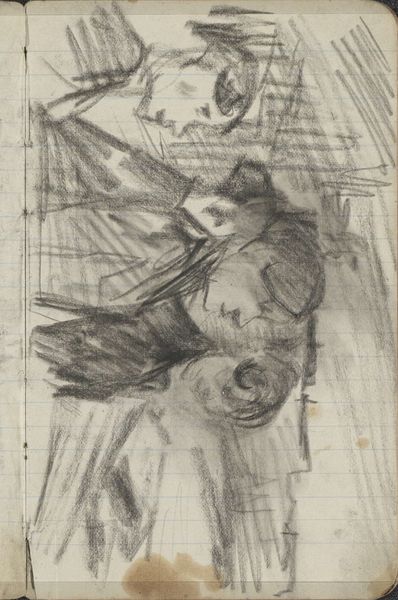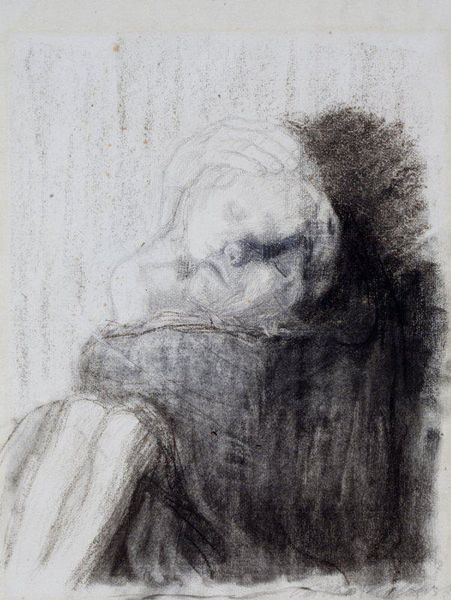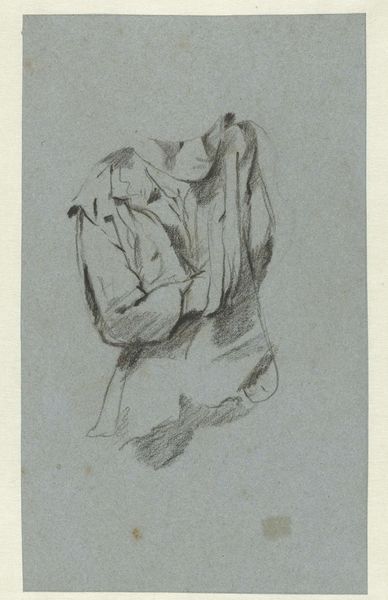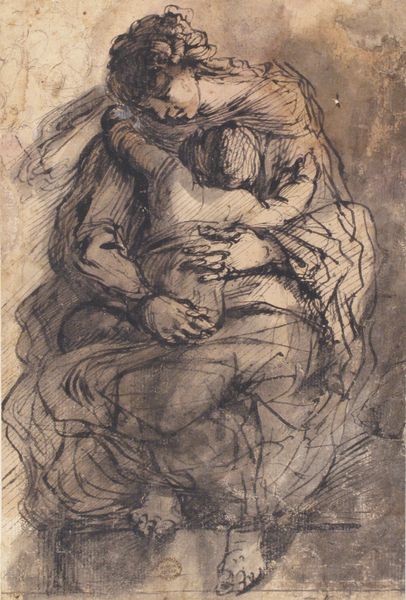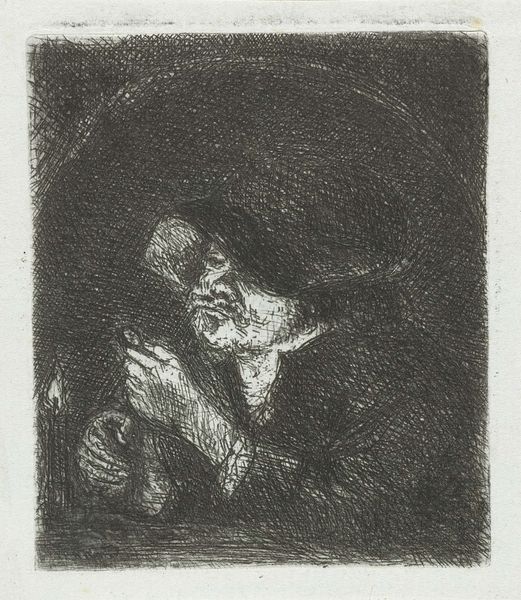
drawing, charcoal
#
portrait
#
pencil drawn
#
drawing
#
mother
#
pencil sketch
#
german-expressionism
#
figuration
#
child
#
pencil drawing
#
sketch
#
expressionism
#
portrait drawing
#
charcoal
#
history-painting
#
sitting
Copyright: Public domain
Curator: This drawing, “Death with Girl in Her Lap” by Käthe Kollwitz, seems to be charcoal and pencil on paper. The subject matter feels so raw, so emotionally exposed. What do you make of it? Editor: I'm immediately struck by the stark contrast in values and the heavy lines. It seems like it conveys immense grief. What is she trying to show with this level of material crudeness? Curator: Kollwitz’s work, particularly her drawings and prints, often engage with themes of poverty, war, and loss. Here, consider the social conditions surrounding the work’s creation; look at the quality of materials. Does the rough charcoal, hastily applied, echo the brutal realities she witnessed? The immediacy of the drawing almost forces you to confront a stark depiction of human suffering, divorced from the illusionistic refinement often associated with high art. Editor: So the accessibility and availability of charcoal, its almost primal nature as a drawing tool, reinforces the raw emotion and democratic appeal of the artwork. Right? Is it like making it immediate? Curator: Exactly. Charcoal isn't precious like oil paint; it’s born of destruction, of burning. How might that inform our understanding of Death's presence in the work? Furthermore, how do you think its production democratizes the artistic experience, both for Kollwitz herself and for the viewer? It could suggest a challenge to established norms of artistic creation. Editor: That's fascinating. I hadn't considered the choice of material as being so integral to the overall meaning. Now I understand how Kollwitz, by embracing such "base" material, elevates it into something profoundly moving. Curator: It really shifts the way we see the artist as producer and the art object as product. Her mark-making becomes almost a form of labor in itself, embodying empathy. Editor: I see. This conversation made me think about the way artists like Kollwitz engaged directly with social issues, making their artistic process inherently political. Curator: Exactly. It’s not just about the image; it’s about how it was made and the statement that making implies.
Comments
No comments
Be the first to comment and join the conversation on the ultimate creative platform.
